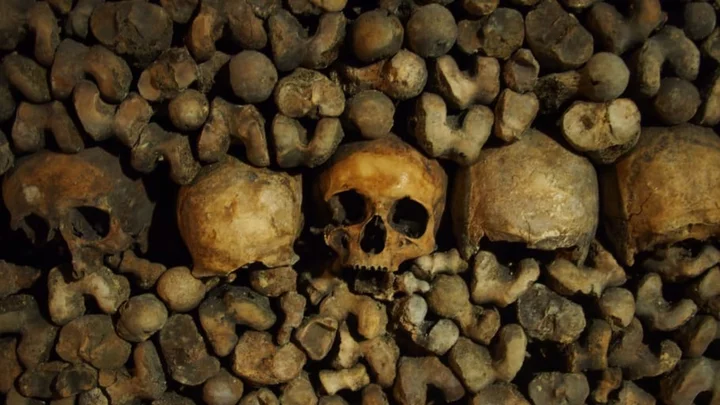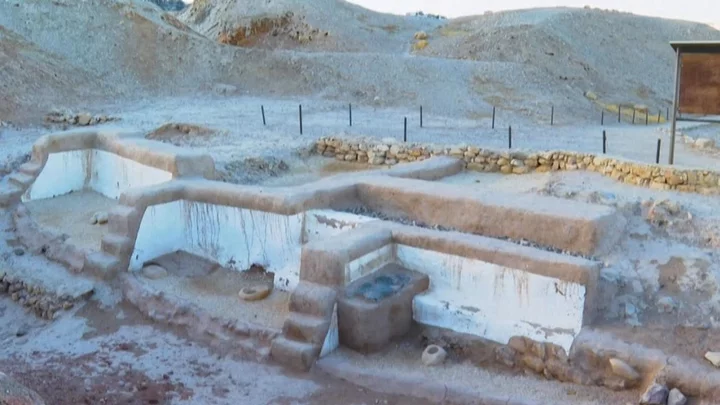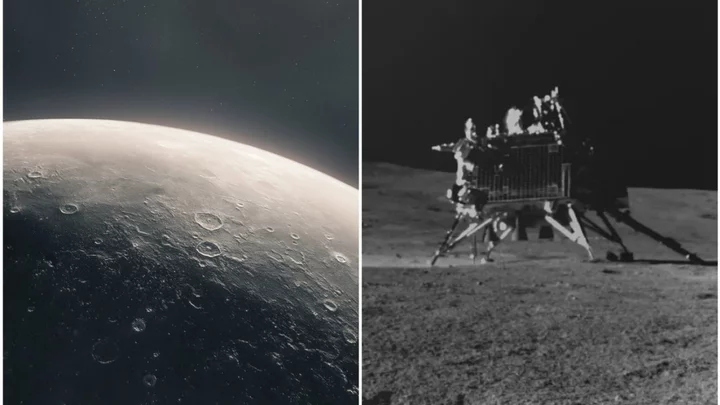
Starfield 1.7.33 Update Details
This is everything you need to know about Starfield's Update 1.7.33.
2023-09-26 02:22

France Plans to Curb Power Prices to Boost Green Investment
France will introduce a law to curb power prices by the end of the year to encourage the
2023-09-26 02:15

AI, Robots and Satellite Sensors Are Helping in the Fight Against Wildfires
This year has been a challenging one for Phil Schneider, who hasn’t seen wildfire behavior like this in
2023-09-26 01:23

How to Unlock Skeletor Operator in Warzone 2
To unlock the Skeletor Operator in Warzone 2, players must purchase the Skeletor Bundle from the store during The Haunting for 2,400 COD points.
2023-09-26 01:22

10 Haunting Dark Tourism Destinations From Around the World
From Auschwitz to the 9/11 Memorial & Museum, these dark tourism destinations are fascinating—and definitely not for the faint of heart.
2023-09-26 00:15

NBA 2K24 Update 1.3 Patch Notes: Full List of Changes
The NBA 2K24 update 1.3 patch notes are here with changes to MyCAREER mode, dunking, defense, and more, set to hit the game in October.
2023-09-25 23:55

When is the Next Fortnite World Cup?
The next Fortnite World Cup, known as the FNCS Global Championship 2023, begins on Oct. 13 in front of a live audience in Copenhagen, Denmark.
2023-09-25 23:47

New language discovered in ancient Bronze Age ruins
Ancient clay tablets unearthed from ancient ruins in Turkey by archaeologists have revealed a language lost to the passages of time. The new language was discovered in the ancient capital of the Hittite Empire at Hattusa (known as Boğazköy-Hattusha). The well-preserved tablets are among many incredible artworks found at the site - a UNESCO World Heritage Site. Over the past four decades, researchers have dusted off nearly 30,000 unique tablets - with most written in Hittite. New research, however, shows that some of the tablet haul shows that they are written in a language previously unknown to modern man. Of course, the meaning and words of this language have not been deciphered, but it appears from early inspection to branch off from languages used within the Hittite Empire - and is being referred to as Kalašma. Interestingly though, researchers from the Istanbul Department of the German Archaeological Institute have noted that the new language is found within a recitation in a 'cultic ritual text'. While that's usually the basis of a middling horror movie, we're certain that there's nothing to worry about - it stems from an ancient Hittite practice. Professor Daniel Schwemer explains that the discovery wasn't unexpected. "The Hittites were uniquely interested in recording rituals in foreign languages," he said. These ritual texts provide insight into little-known languages, and thanks to this discovery, one more has been added to the list. Sign up for our free Indy100 weekly newsletter Have your say in our news democracy. Click the upvote icon at the top of the page to help raise this article through the indy100 rankings.
2023-09-25 23:27

Chandrayaan-3 makes 'unexpected' discovery on the Moon
India’s Chandrayaan-3 lander only touched down on the Moon a month ago, but already it's made some major contributions to science. The spacecraft arrived on the satellite's unexplored south pole on 23 August, securing India's place as the first country to achieve this ambitious feat. Its rover, named Pragyan (or "wisdom" in Sanskrit) then embarked on an exploration of the rocky terrain, equipped with two instruments for conducting chemical experiments. And now, India's space agency, the ISRO, has published the ground-breaking data collected by the bold robot. Pragyan's findings offered a new, detailed insight into what makes up the lunar soil. And whilst scientists were unsurprised by the presence of iron, titanium, aluminium and calcium in the rocks, they were stunned to note a much higher concentration of sulphur than expected. The discovery is significant for a number of reasons. Most significantly, perhaps, because the sulphur could be used to help create a human base on the Moon. As Jeffrey Gillis-Davis, a planetary scientist, pointed out in a piece for Science Alert: "Astronauts and robots could travel from the south pole base to collect, process, store and use naturally occurring materials like sulfur on the Moon – a concept called in-situ resource utilization. "In-situ resource utilization means fewer trips back to Earth to get supplies and more time and energy spent exploring. Using sulfur as a resource, astronauts could build solar cells and batteries that use sulfur, mix up sulfur-based fertilizer and make sulfur-based concrete for construction." Gillis-Davis went on to explain that sulfur-based concrete has a number of advantages over the more common variety used in building, pointing out that it "hardens and becomes strong within hours rather than weeks, and it's more resistant to wear". "It also doesn't require water in the mixture, so astronauts could save their valuable water for drinking, crafting breathable oxygen and making rocket fuel," he added. The presence of sulphur near the Moon's south pole also suggests that highland soils at the lunar poles could have very different compositions to highland soils at the lunar equatorial regions. This would have key implications for our understanding of how the Moon works as a geological system, given that sulfur mainly comes from volcanic activity. Still, there's plenty of work to be done. And while this is all just one small step in Chandrayaan-3's mission, it could mean a great leap in how we view our dear celestial companion. Sign up for our free Indy100 weekly newsletter Have your say in our news democracy. Click the upvote icon at the top of the page to help raise this article through the indy100 rankings.
2023-09-25 23:26

Scientists believe alien life could exist under 'impossible' conditions
Scientists have found that one of the key pillars of theory around how life works – that it depends on carbon – may not be the case on other planets. Here on Earth, life depends on organic compounds which are composed of carbon, and often involve other elements such as sulphur, oxygen, hydrogen, nitrogen and phosphorus. With organic compounds, life is partly sustained by chemical interactions called autocatalysis, which are self-sustaining. That means they produce molecules which then enable the reaction to happen again, and do not need any outside influence to keep going on. In the new study, scientists looked for autocatalysis in non-organic compounds. The theory is that if autocatalysis helps drive a process called abiogenesis – the origin process for life – then this origin process could also come from non-organic matter. Betül Kaçar, an astrobiologist, bacteriologist and evolutionary biologist at the University of Wisconsin-Madison, told news outlet Space.com: “It's important to explore these possibilities so that we have an idea of what all forms of life can look like, not just Earth life.” "One of the major reasons that origin-of-life researchers care about autocatalysis is because reproduction — a key feature of life — is an example of autocatalysis. “Life catalyses the formation of more life. One cell produces two cells, which can become four and so on. “As the number of cells multiply, the number and diversity of possible interactions multiplies accordingly.” The scientists searched in a huge trove of existing scientific documents for examples of autocatalysis, and found 270 different cycles of the reactions. Most of the 270 examples did not feature organic compounds, but rather elements which are rare in life forms such as mercury, or the radioactive metal thorium. “It was thought that these sorts of reactions are very rare,” Kaçar said in a statement. “We are showing that it's actually far from rare. You just need to look in the right place.” Now, it means scientists can test these cycles to get a better understanding of how autocatalysis can work. “The cycles presented here are an array of basic recipes that can be mixed and matched in ways that haven't been tried before on our planet,” said study author Zhen Peng, also an evolutionary biologist at the University of Wisconsin-Madison. “They might lead to the discovery of completely new examples of complex chemistry that work in conditions where carbon- or even silicon-based cycles are too either combusted or frozen out.” The scientists published their findings in the Journal of the American Chemical Society. Sign up to our free Indy100 weekly newsletter Have your say in our news democracy. Click the upvote icon at the top of the page to help raise this article through the indy100 rankings.
2023-09-25 23:21

OpenAI's ChatGPT will 'see, hear and speak' in major update
OpenAI's ChatGPT is getting a major update that will enable the viral chatbot to have voice conversations with
2023-09-25 22:56

TOTW 2 Predictions FC 24: Son, Trippier, Joao Cancelo and More
TOTW 2 predictions for FC 24 Ultimate Team include Heung-min Son, Joao Cancelo, Kieran Trippier, Harry Kane, Anderson Talisca and more.
2023-09-25 22:46
